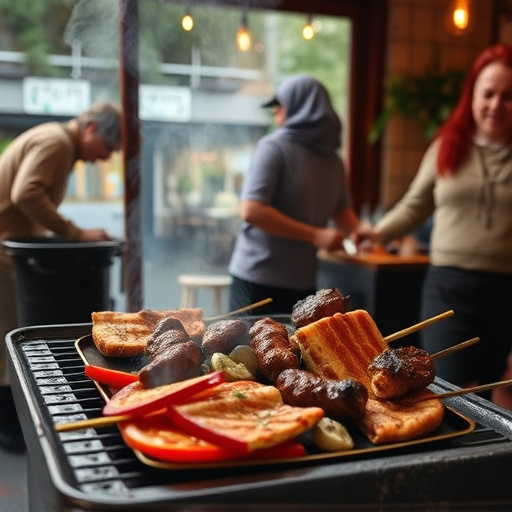Creating an exceptional BBQ jerky recipe centers around selecting the right cut of lean beef like sirloin or round steak for a crispy, tender end product. Balancing seasonings with essential spices and marinating thoroughly enhances flavor. Proper drying at 160°F (71°C) for 8-12 hours ensures a perfectly textured, flavorful jerky. Storing in airtight containers at room temperature maintains freshness up to 2 weeks. Avoiding oversalting and adequate drying prevent toughness. Experimenting with spices, sugars, or citrus juices adds unique twists to your BBQ jerky recipe for a standout result.
“Unleash your inner chef with our comprehensive guide to creating mouthwatering BBQ jerky at home! Discover the secrets to transforming choicest cuts of beef into crispy, flavorful treats. From selecting the perfect meat to mastering the art of seasoning and drying, we’ll walk you through every step. Learn about various spice blends, cutting techniques, and storage tips for a delicious DIY BBQ jerky recipe. Avoid common pitfalls and explore creative flavor combinations that will wow your taste buds.”
- Selecting the Right Cut of Beef for Jerky
- Preparing and Marinating the Meat
- Spices and Seasonings for a Delicious Blend
- The Art of Drying: Temperature and Time
- Techniques for Cutting and Slicing Beef Jerky
- Tips for Storage and Shelf Life
- Common Mistakes to Avoid During the Process
- Creative Variations and Flavor Ideas
Selecting the Right Cut of Beef for Jerky
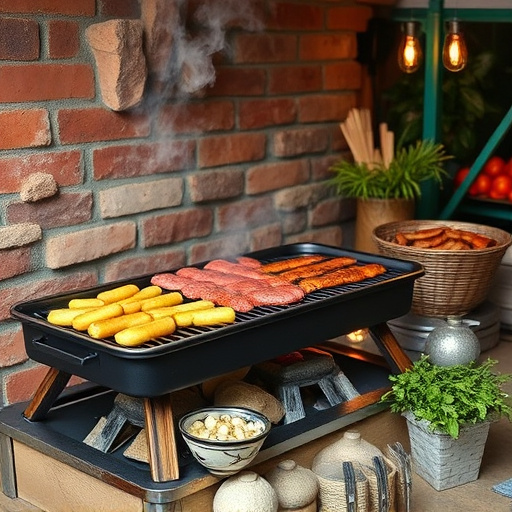
When it comes to making delicious BBQ jerky, choosing the right cut of beef is key. Opt for lean cuts like round or sirloin as they have less fat and collagen, ensuring your final product is crispier and more tender. These cuts may take a bit longer to cook, but they’ll result in superior quality jerky that’s perfect for snacking. In a BBQ jerky recipe, the goal is to achieve a balance of flavor and texture, and selecting the right beef plays a significant role in this process.
Different cuts offer varying levels of marbling (the distribution of fat within the muscle), which can impact the final taste and consistency. For instance, well-marbled cuts will become softer and more flavorful during the dehydration process, while leaner cuts may require additional seasoning to enhance their taste. Remember, the right cut will not only ensure your jerky turns out perfectly but also contribute to an exceptional BBQ jerky recipe that your friends and family will love.
Preparing and Marinating the Meat
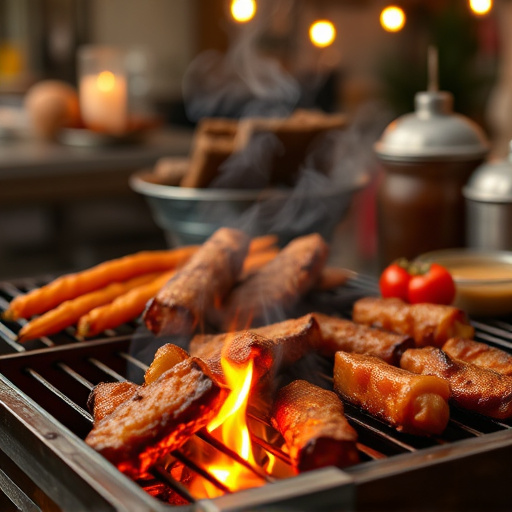
Preparing and marinading the meat is a crucial step in creating the perfect BBQ jerky recipe. Start by selecting high-quality, lean beef cuts like sirloin or round steak. Trim any excess fat to ensure your jerky doesn’t become too greasy. Once trimmed, cut the meat into thin slices, ideally 1/4-inch thick or less, for even cooking and a tender final product.
Before seasoning, marinating the meat allows flavors to penetrate deeply. Combine your favorite BBQ spices in a bowl, using ingredients like salt, pepper, smoked paprika, garlic powder, onion powder, and brown sugar. Pour over the beef slices, ensuring every piece is coated evenly. Let the meat marinate for at least 2 hours or up to 24 hours in the refrigerator for maximum flavor infusion.
Spices and Seasonings for a Delicious Blend
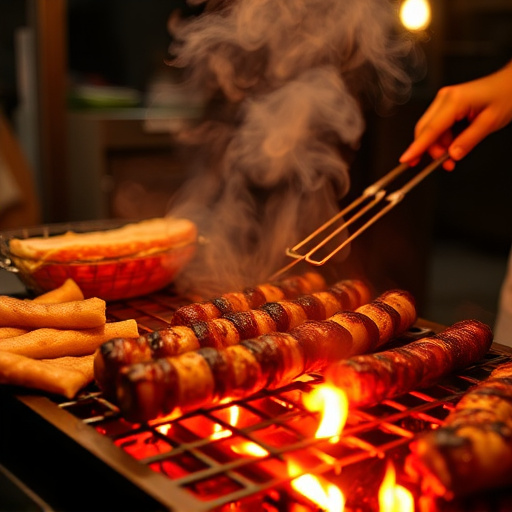
When it comes to seasoning beef for BBQ jerky, the key is to create a blend that packs a punch while still allowing the natural flavors of the meat to shine through. A well-crafted BBQ jerky recipe incorporates a balance of spices and seasonings that enhance the taste without overpowering it. Start with a base of salt and pepper, as these are essential for drawing out the meat’s juices and adding a savory kick.
Consider adding smoked paprika for a rich, smoky flavor, chili powder for heat and depth, garlic powder for a pungent aroma, and onion powder for a mild sweetness. A sprinkle of cayenne pepper or red pepper flakes can add a fiery finish if you prefer your jerky spicy. Experiment with different combinations to find the perfect blend that suits your taste preferences, ensuring your BBQ jerky recipe is truly delicious and distinctive.
The Art of Drying: Temperature and Time
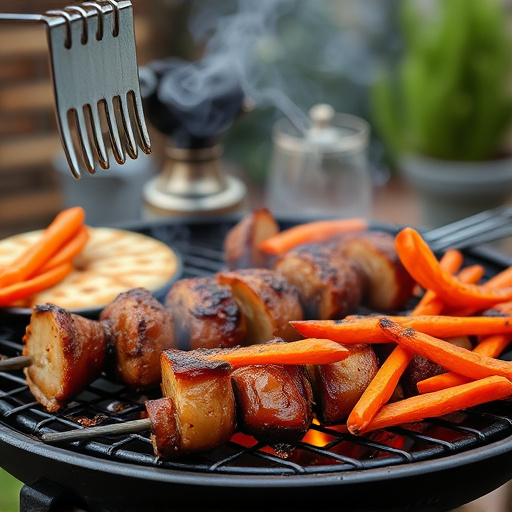
The art of drying beef for BBQ jerky lies in achieving the perfect balance of temperature and time. For optimal results, set your dehydrator to around 160°F (71°C). This temperature range allows for slow, even drying, preserving the meat’s flavor and texture. The process typically takes between 8 to 12 hours, depending on the thickness of the slices and the humidity level in your dehydrator. Start checking the jerky after 4-5 hours; it’s ready when it’s crisp and easily breaks apart. Proper timing ensures that your BBQ jerky recipe turns out tender, flavorful, and perfectly textured.
Techniques for Cutting and Slicing Beef Jerky

When preparing beef for a BBQ jerky recipe, proper cutting and slicing techniques are key to achieving the perfect texture and presentation. Start by selecting a lean cut of beef, such as sirloin or flank steak, ensuring it’s well-marbled for maximum flavor. After buying, let the meat come to room temperature before beginning preparation.
For optimal results, slice the meat against the grain using a sharp knife or a specialized jerky slicer. This technique ensures each strip is thin and uniform, allowing for even cooking and preventing tough, chewy jerky. Aim for slices between 1/8th and ¼ inch thick to achieve the desired crispiness. Proper cutting also helps with the seasoning penetration, ensuring every bite is packed with that delicious BBQ flavor.
Tips for Storage and Shelf Life
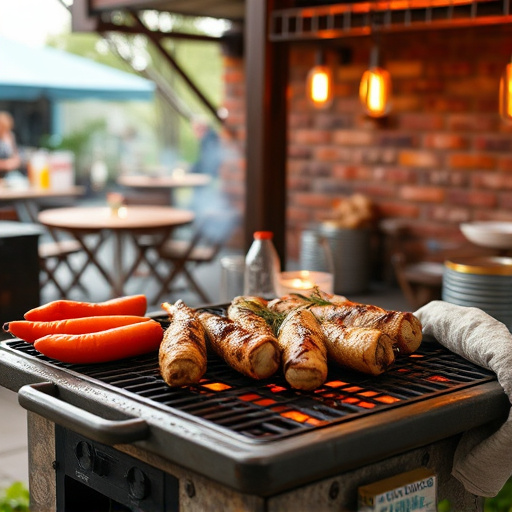
When storing your homemade BBQ jerky, it’s best to keep it in an airtight container at room temperature. This helps maintain its crispness and prevents exposure to moisture or air, which can cause it to become soggy. For maximum shelf life, aim for 1-2 weeks when stored properly. If you have a large batch, consider dividing it into smaller portions and labeling each with the date of preparation—this way, you can consume it fresh while still enjoying your BBQ jerky recipe long after its initial preparation. Regularly checking the condition of your jerky is essential; any signs of mold or off odor should prompt immediate disposal to ensure food safety.
Common Mistakes to Avoid During the Process
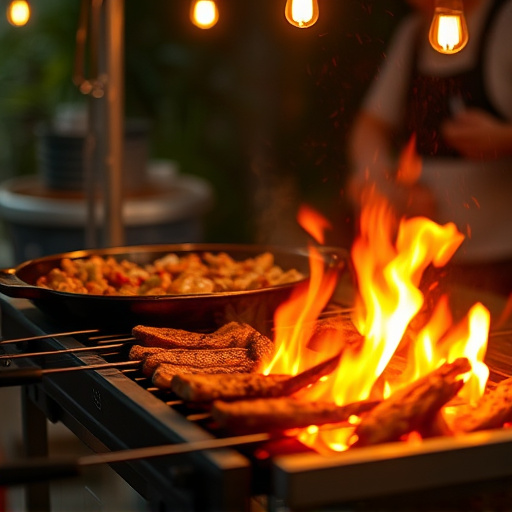
When preparing a BBQ jerky recipe, it’s essential to stay clear of some common pitfalls that can ruin your hard work. One of the biggest mistakes is oversalting; while salt is crucial for preservation and flavor, too much can overpower the natural juices in the meat, making it tough and unappetizing. Always follow a balanced seasoning ratio recommended by reliable BBQ jerky recipes to ensure a delicious, tender end product.
Another frequent error is inadequate drying. Properly seasoned beef jerky needs to be thoroughly dried to achieve that crisp, satisfying texture. Insufficient drying can result in chewy, soft jerky that lacks the characteristic crackle when broken. Be patient and allow enough time for the meat to dehydrate completely; this step is critical not only for texture but also for food safety, as it helps prevent bacterial growth.
Creative Variations and Flavor Ideas
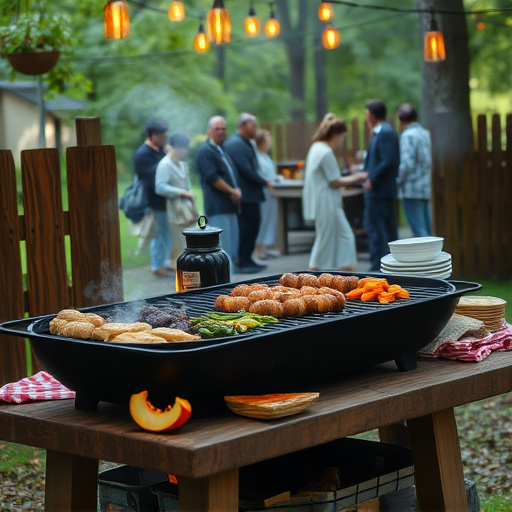
Adding a unique twist to your BBQ jerky recipe can transform a classic into something extraordinary. Beyond the traditional seasoning blend, explore creative variations and flavor ideas to elevate your jerky experience. Experiment with different types of spices like smoked paprika, cayenne pepper, or even a touch of curry powder for a burst of heat and exoticism. You can also incorporate dried herbs such as thyme, rosemary, or oregano for an aromatic profile that’s distinctively herbal.
For a sweeter twist, consider adding brown sugar, maple syrup, or a drizzle of honey to your marinade. This balance of sweet and savory notes can create a delightful contrast. Additionally, citrus juices like lemon or orange not only add acidity but also impart a refreshing flavor that pairs surprisingly well with the rich meat. Don’t be afraid to get adventurous; combining these ideas can lead to mouthwatering BBQ jerky recipes that are anything but ordinary.
